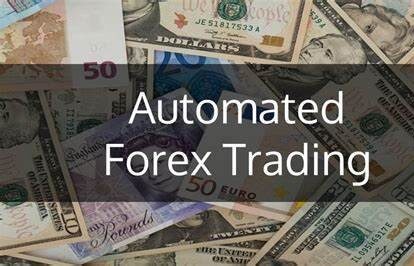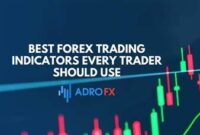Automated forex trading systems have become increasingly popular among forex traders. These systems leverage technology to execute trades automatically, based on predetermined criteria and trading algorithms. Automated systems remove the emotional element from trading, offering a more consistent approach that many traders find appealing. In this article, we’ll delve into the world of automated forex trading systems, explaining how they work, their key benefits, the different types available, and factors to consider when selecting one.
What is an Automated Forex Trading System?
An automated forex trading system is a computer-based program that automatically executes trades on behalf of a trader. It relies on a set of rules or algorithms that determine when to buy or sell currency pairs in the forex market. By eliminating the need for manual execution, these systems can help traders take advantage of fast-moving market opportunities.
Automated trading systems are designed to monitor the market constantly, and they can execute trades within seconds when preset conditions are met. The core of these systems is a trading algorithm — a mathematical formula that analyzes market data, such as price movements, trends, and patterns, to predict potential profitable trades.
Benefits of Automated Forex Trading Systems
Automated forex trading systems offer a variety of advantages for traders. Here are some of the main reasons traders turn to automation:
- Consistency and Discipline
Emotions often lead traders to make impulsive decisions, especially in high-stakes markets like forex. Automated systems eliminate emotions, adhering strictly to the rules of the algorithm. This approach promotes discipline and consistency, ensuring that the trading strategy is followed without deviation. - Speed and Efficiency
The forex market is highly volatile, with prices changing rapidly. Automated trading systems operate in milliseconds, allowing them to execute trades instantly. This speed can give traders an edge by capturing opportunities that manual trading might miss. - Around-the-Clock Trading
The forex market operates 24 hours a day, making it challenging for traders to monitor it constantly. Automated systems can run continuously, placing trades even when the trader is away from their computer. This feature is particularly beneficial for traders who wish to capitalize on global market movements outside regular trading hours. - Backtesting Capabilities
Automated trading systems often allow traders to backtest their strategies against historical data. Backtesting helps determine if a trading strategy would have been profitable in the past, allowing traders to refine their approach before committing real funds. - Risk Management
Many automated systems come with built-in risk management features, such as stop-loss and take-profit settings. These features help limit potential losses and secure gains, making automated systems ideal for traders focused on managing risk.
Types of Automated Forex Trading Systems
Not all automated forex trading systems are created equal. Some are designed for specific trading strategies, while others offer more general features. Here’s an overview of the different types of systems available:
Expert Advisors (EAs)
Expert Advisors (EAs) are one of the most popular forms of automated forex trading systems, particularly on platforms like MetaTrader 4 (MT4) and MetaTrader 5 (MT5). EAs are software programs that execute trades based on a predefined set of rules. Traders can purchase ready-made EAs or create their own using MetaTrader’s built-in programming language, MQL4 or MQL5.
Advantages of EAs:
- Customizable and easy to integrate with MetaTrader platforms
- Allow for both simple and complex trading strategies
- Backtesting capabilities within the platform
Algorithmic Trading Systems
Algorithmic trading systems use mathematical models and statistical analysis to execute trades automatically. These systems rely on sophisticated algorithms that analyze historical and real-time market data to make predictions about future price movements. Algorithmic trading is often used by institutional traders and hedge funds, but there are also options available for retail traders.
Advantages of Algorithmic Trading:
- Ability to process large volumes of data quickly
- Supports high-frequency trading (HFT) strategies
- Advanced customization for experienced traders
Copy Trading and Social Trading Platforms
Copy trading allows traders to replicate the trades of other successful traders automatically. Platforms like eToro and ZuluTrade offer copy trading, where users can select a trader to follow, and the platform automatically copies their trades. This type of system is ideal for beginners who want to learn from experienced traders.
Advantages of Copy Trading:
- Ideal for beginners and those with limited market knowledge
- Offers a hands-off approach to trading
- Provides transparency by allowing users to view the performance of other traders
Machine Learning-Based Trading Systems
Machine learning-based trading systems use artificial intelligence (AI) to analyze data and improve trading strategies over time. These systems can adapt to changing market conditions, making them more flexible than traditional algorithmic trading systems. While machine learning systems are still emerging, they are becoming increasingly popular due to their advanced capabilities.
Advantages of Machine Learning Systems:
- Adapt to new market conditions automatically
- Offer more accurate predictions by learning from historical data
- Reduce the need for manual adjustments
Key Features to Look for in an Automated Forex Trading System
When choosing an automated forex trading system, consider the following features to ensure it aligns with your trading goals and risk tolerance:
User-Friendliness and Customizability
A good automated trading system should be easy to use and offer customization options. Beginners may prefer a straightforward system, while experienced traders might look for systems with extensive customization features to fine-tune their strategies.
Backtesting and Optimization
Backtesting allows traders to test a system’s performance on historical data, while optimization helps fine-tune the strategy for better results. Choose a system with robust backtesting features to help assess its potential profitability.
Risk Management Tools
Effective risk management is crucial for successful trading. Look for systems with built-in stop-loss and take-profit settings, which can help minimize losses and lock in profits automatically.
Trading Signals and Alerts
Some automated trading systems provide trading signals and alerts, which can help traders decide when to enter or exit trades. Signals can be based on technical indicators, fundamental analysis, or a combination of both.
Compatibility with Trading Platforms
The automated trading system should be compatible with popular trading platforms, such as MetaTrader 4, MetaTrader 5, or cTrader. Compatibility ensures easy integration and access to other trading tools available on these platforms.
Advantages and Disadvantages of Automated Forex Trading Systems
| Advantages | Disadvantages |
|---|---|
| Consistency and reduced emotional bias | Potential technical issues or glitches |
| Speed and efficiency in trade execution | Limited flexibility and adaptability |
| 24/7 market monitoring and trading | Requires regular monitoring and updates |
| Allows for backtesting and optimization | Over-optimization can lead to poor results |
| Access to advanced risk management tools | May incur additional costs or fees |
Automated trading systems offer significant benefits, but it’s essential to remember that they are not foolproof. Technical issues, market fluctuations, and unforeseen economic events can affect even the best algorithm.
How to Get Started with Automated Forex Trading Systems
If you’re interested in using an automated forex trading system, follow these steps to get started:
Choose a Reliable Platform
Begin by selecting a trading platform compatible with automated systems. MetaTrader 4 (MT4) and MetaTrader 5 (MT5) are popular choices that support a wide range of automated tools and offer a stable trading environment.
Determine Your Strategy
Automated trading systems work best when based on a well-defined strategy. Decide on a strategy that aligns with your trading goals, risk tolerance, and market analysis approach. For instance, scalpers might prefer a high-frequency trading algorithm, while position traders may need a longer-term system.
Backtest Your System
Backtesting helps determine if your automated system would have been profitable in the past. This step is essential for refining the system and ensuring that it meets your expectations. Use historical data to test different configurations and optimize your system.
Start with a Demo Account
Before committing real money, practice using your automated system in a demo account. This allows you to test its effectiveness in real market conditions without risking capital. Once you’re confident, transition to a live account.
Monitor and Adjust
While automated systems require less hands-on management, they still need regular monitoring. Adjust the system based on market performance and refine the strategy as needed. Markets evolve, and an automated system that performs well in one environment may not be as effective in another.
Frequently Asked Questions About Automated Forex Trading Systems
Q1: Are automated forex trading systems profitable?
Automated systems can be profitable, but there are no guarantees. Their success depends on the quality of the algorithm, the market conditions, and the trader’s ability to monitor and adapt the system.
Q2: Do I need programming skills to use an automated trading system?
No, many automated systems are pre-built and user-friendly, requiring no programming knowledge. However, if you wish to create a custom system, programming skills may be helpful, especially if using platforms like MetaTrader.
Q3: Can automated trading systems trade on my behalf without my involvement?
Yes, once set up, an automated system can trade autonomously. However, it’s recommended to monitor its performance periodically to ensure it aligns with your trading goals.
Q4: How much do automated trading systems cost?
The cost varies. Some systems are free, while others charge monthly subscription fees or require a one-time purchase. Additionally, some brokers offer free systems for users who open an account with them.
Q5: Are automated trading systems legal?
Yes, automated trading is legal in most countries, provided the system complies with financial regulations. Be sure to use a regulated broker and trading platform.
Conclusion
Automated forex trading systems have revolutionized the trading landscape by allowing traders to execute trades with efficiency and discipline. They offer benefits like 24/7 market monitoring, reduced emotional bias, and enhanced risk management. However, success with automated trading systems requires careful selection, regular monitoring, and a clear strategy. By choosing a reputable system, backtesting it, and staying informed about market conditions, traders can leverage automation to enhance their trading experience.
For more information on automated trading systems, you may find a useful resource on Investopedia’s guide to algorithmic trading.




